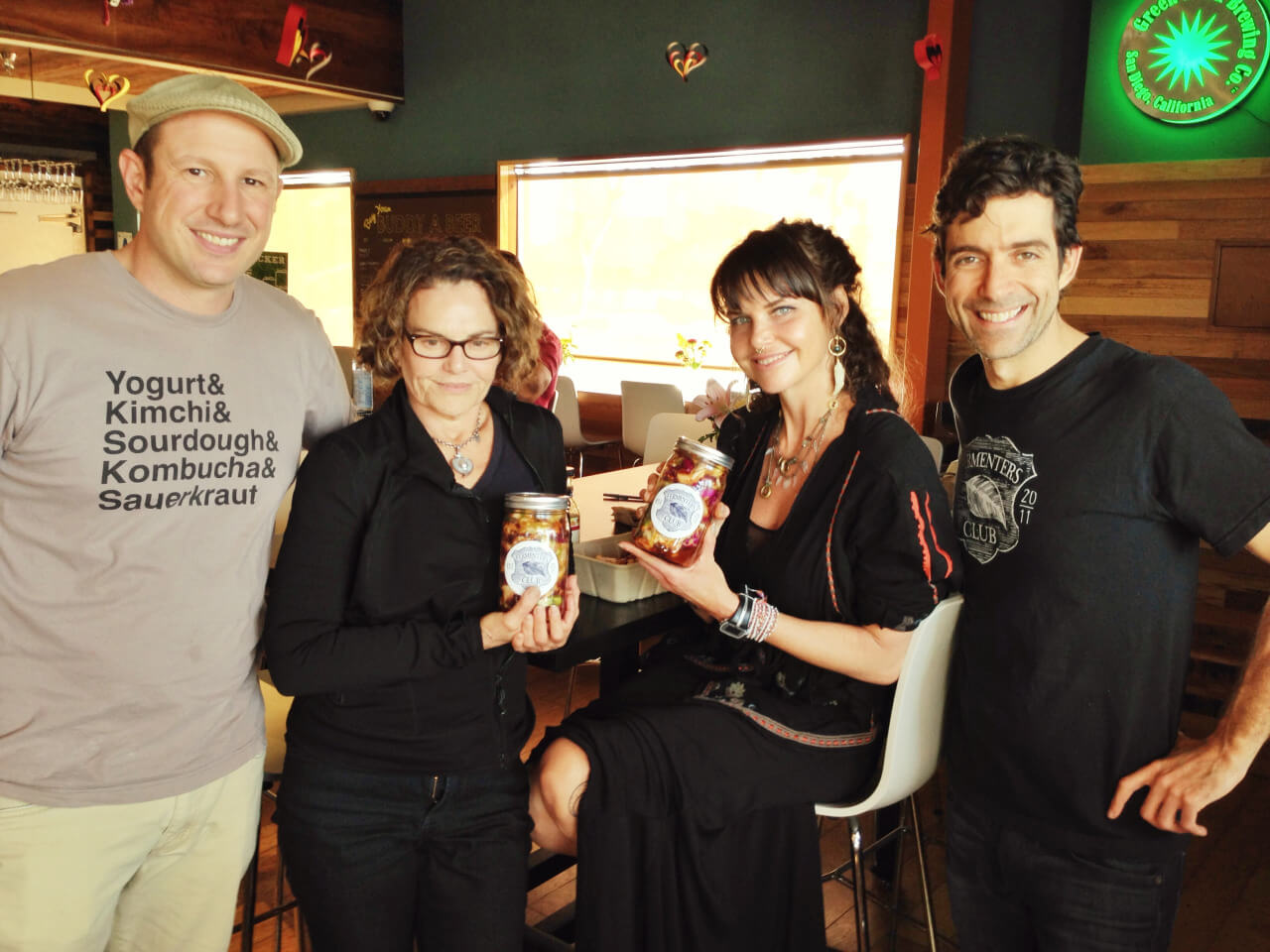I must have been drooling as I eyed a giant jar full of homemade sauerkraut on the community table I was sharing at Whole Foods Market today. Next thing I know, I am having the awesome experience of meeting Austin and Brent as they generously serve me a sampler plate of sauerkraut and kimchi to share with my mom, who has joined me for lunch.
I imagine my pupils must have blossomed as the zingy flavors burst in my mouth. Mom and I both agreed this is the best tasting ‘kraut n ‘chi we have ever tasted. As it turns out, Austin and Brent are not only epicureans specializing in fermented foods, but they also enjoy teaching about the preparation and health benefits of these healing (and tasty) treats. I was truly jazzed when I realized my new friends shared my excitement about the healing qualities of fermented foods.
In Austin’s words, he reminded me that our gut is our secondary nervous system. It is more linked to our mood & well being than we currently understand. “Do you know that 95% of the serotonin in our body resides in our gut?”, he asked me.
I have a gut instinct that the answer to that question is the more probiotics (Latin ‘for-life’) I enjoy from these delicious fermented foods, the happier my body and mind will be.
If you’d like to learn more, check our their site at Fermenter’s Club.
And if you are ready to make the best ‘kraut ever, here’s Austin’s Recipe:
Fennel Ginger Sauerkraut
Prep time: 20 mins
Fermentation time: 2-6 weeks
Yield: About 4 quarts/4 liters
Ingredients
5-6 lbs./2.5 kg red or green cabbage (about 2 medium heads)
3 Tablespoons/45 mL sea salt
2 medium to large fennel bulb
6″ to 8″ (15 to 20cm) fresh ginger
1 teaspoon/5 mL dried caraway seeds
½ teaspoon/3 mL dried juniper berries

Instructions:
- Prep & Season Veg
- Clean vegetables to wash dirt off.
- Remove any dark green tough outer leaves from cabbage and compost or use for another purpose.
- Slice a cabbage head in half lengthwise, so that stem keeps each half together.
- Shred each half into ¼” ribbons using v-slicer, mandoline, or chef’s knife.
- As you shred, add to a large mixing bowl, and add ¼ of the salt (about 2 teaspoons). Let sit while shredding the next half. Brine will form as salt draws water from cabbage. Repeat until all cabbage has been shredded.
- Slice the fennel bulbs into the same size strips as cabbage (using a chef’s knife or on mandoline) and add to bowl. Use the green stems as a handle while cutting or slicing. Discard or compost stems.
- Peel skin off ginger using a spoon, then slice/julienne (to create matchstick-sized pieces) and add to bowl.
- Add spices to bowl (optionally TOAST them; see next section). Mix thoroughly with tongs or clean hands.
- Squeeze the mixture with clean hands to break more cell walls and encourage more water to come out of vegetables.
- Add veg to a gallon-sized or larger glass jar or ceramic crock (food-grade plastic containers are also acceptable.) Make sure to get every last drop of brine that has formed in bowl!
- Pack down contents so that surface is even and flat.
(Optional) Toast Spices
- Heat a dry skillet to low heat (about 250°F/121°C).
- Add spices to skillet. Keep an eye on it, tossing spices occasionally. After reaching a golden brown color and toasty aroma, remove from heat.
- Pour toasted spices into a mortar and pestle and crush gently. Add to mixture (see above).
Ferment
- Place a plastic lid (or ceramic plate) that fits inside container. Add a weight such as a glass bottle filled with water. There should be enough brine to completely cover the contents when weighed down.
- Cover container with a dish towel or tea towel to keep out flies and dust. Secure with a rubber band, twist ties or elastic strap. Stash it in a cool, dark place– a cellar, under the stairs, or under the sink in the kitchen.
Cleaning
- Check on it every few days. Mold may form on the surface. Remove weight and lid, and wash them with warm soapy water. Scoop out any surface mold, getting as much as you can. Don’t worry if you don’t get it all. Then stir the contents and re-pack the surface. Any residual mold will quickly be killed in the acidic environment of the brine. The contents are safe under the brine.
- Cabbage will start to ferment within a few days. It’s up to you how long you want to keep it fermenting. Fermentation time varies with the seasons and the climate.
- When taste and texture are to your liking, move to the refrigerator (aka “fermentation pause button”). Sauerkraut will last in the refrigerator several months.






